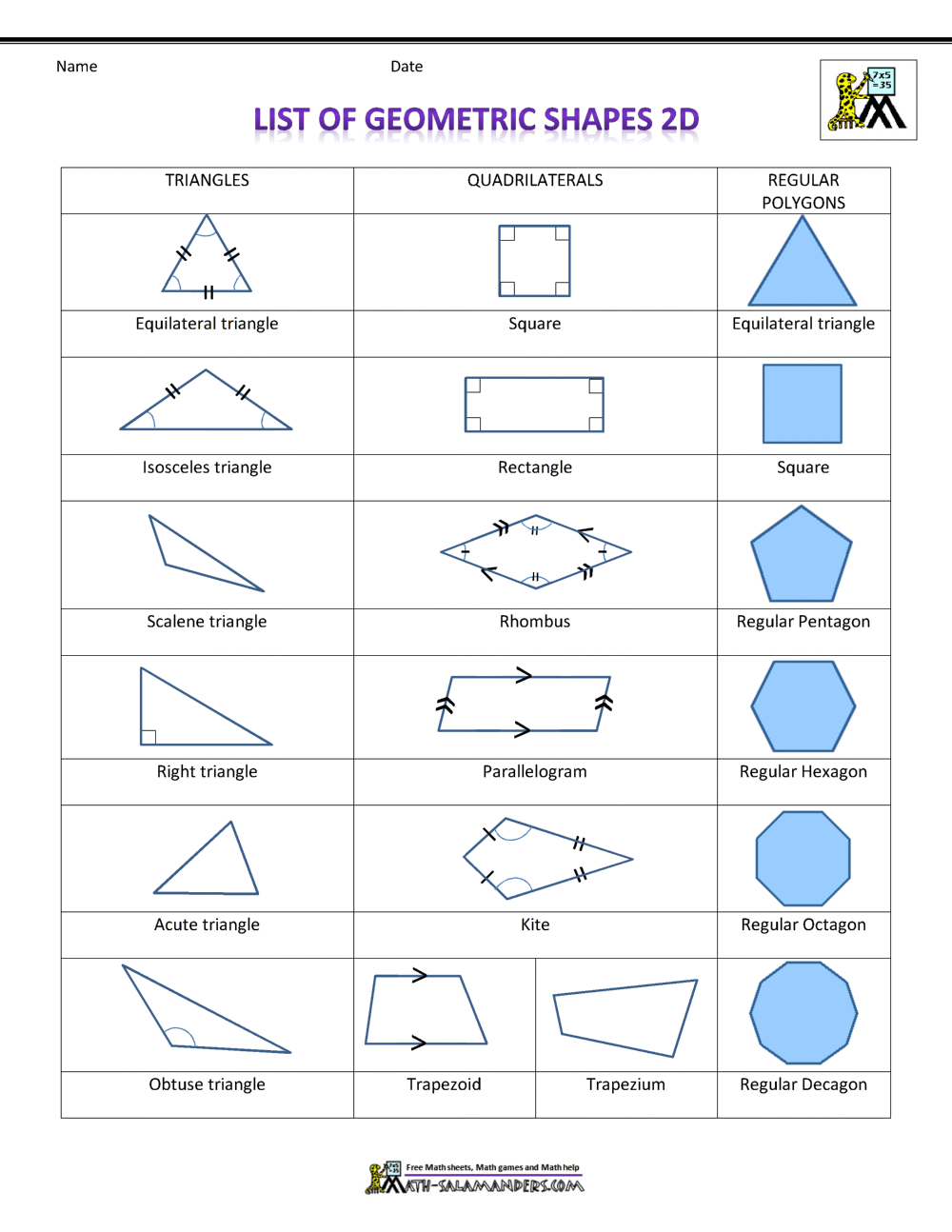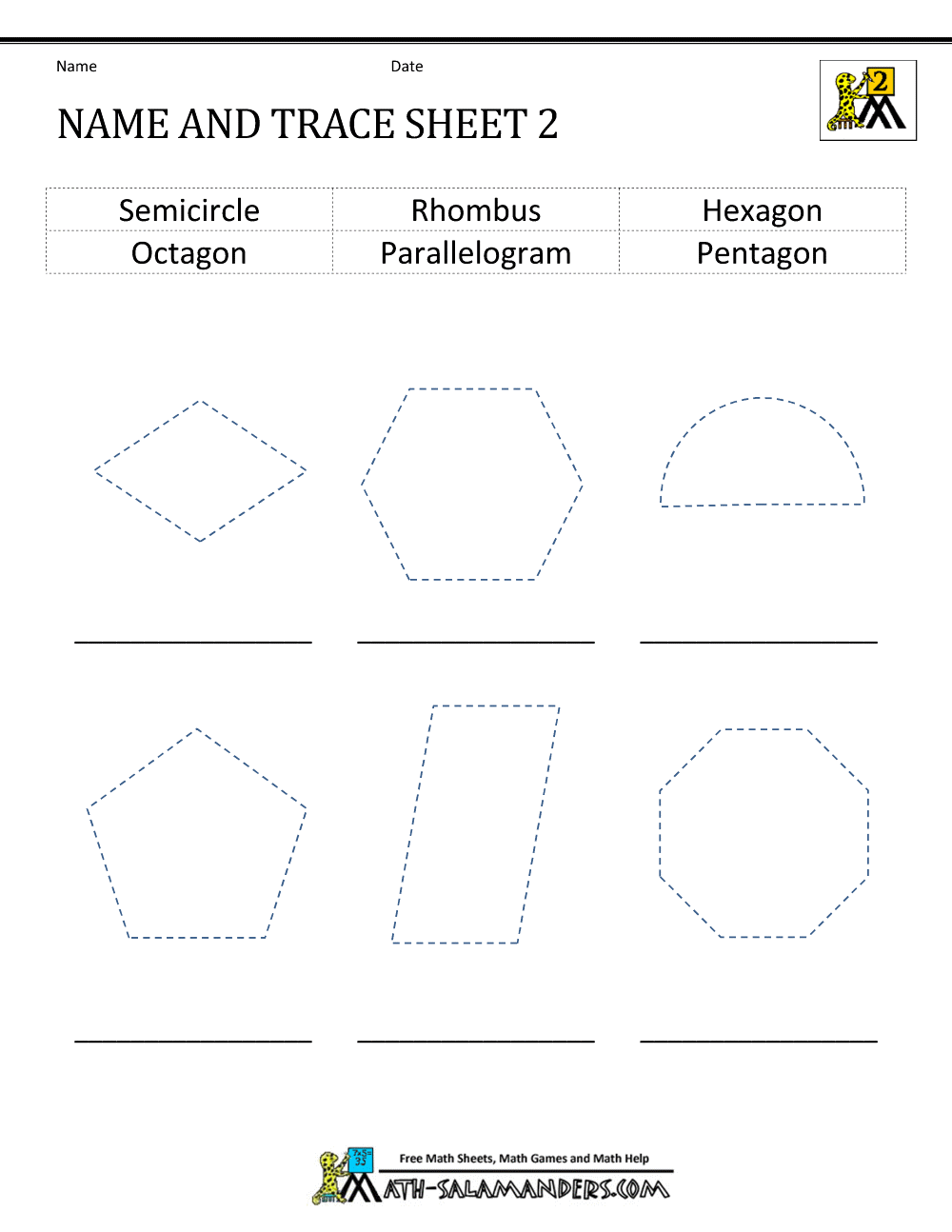

Click here to sign up for Boddle Learning and create your first assignment today.
#2D SHAPES IN GEOMETRY PLUS#
Boddle includes questions related to Comparing and Measuring Lengths plus rewarding coins and games for your students to keep them engaged. Give your students additional standards-aligned practice with Boddle Learning. The video then offers additional practice for your students to understand and identify shapes.
#2D SHAPES IN GEOMETRY WINDOWS#
Windows and pieces of chocolate are examples of squares.

It is longer, more stretched than a circle. Coins and round clocks are examples of circles. The video then presents examples of basic shapes and reviews the attributes that classify them as such. To classify 2D shapes, Boddle explains we look at the number side and corners. It then defines that a two-dimensional shape is a flat plane figure or a shape that has two dimensions: length and width. The video begins by explaining that almost everything we see is made up of shapes. Video 2: Identifying Shapes Based on Their Attributes Your students can identify which shapes from the choices have the same attributes as the selected shape. Instead, it is a curved, closed shape.Īfter, the video provides practice for students to match attributes of shapes. It has zero straight sides and zero corners. It has opposite sides that are the same length. A square has sides and corners that are all the same size. The video then reviews some common shapes, discussing their attributes. Provides examples of open and closed shapes. Some shapes are closed and some are open.An angle is where two sides meet to close a shape. Shapes have corners which are also called angles or vertices.It shows two shapes with straight and curved sides, identifying both. Shapes can have multiple sides: some straight, some curved.The video begins by listing some attributes of common shapes. Video 1: Understanding Basic Shapes and Attributes Create a shape when given a list of defining attributes.Ģ Videos to Help You Teach Common Core Standard: 1.GA.1īelow we provide and breakdown two videos to help you teach your students this standard.Identify basic 3D shapes: cubes, right circular cones, right circular cylinders, etc.Identify basic 2D shapes: rectangles, squares, trapezoids, triangles, etc.Understand and explain the difference between defining and non-defining attributes (i.e.

Students who understand this principle can: three thirds, four fourths, etc.) They will also learn that the “equal shares of identical wholes” do not need to the same shape to equal each other (2.G.2-3).Ĭommon Core Standard: 1.GA.1 - Distinguish between defining attributes versus non-defining attributes They will also be able to cut shapes into equal parts and deepen their understanding of “part and whole relationship,” explaining that a whole can be made up of parts (i.e. Your students will learn to identify more complex shapes: triangles, quadrilaterals, hexagons and cubes (2.G.1). By understanding halves and fourths, your students will be able to work with, draw, and analyze shapes. This 1st grade skill of understanding halves and fourths will help your students when they move onto 2nd grade. They should also be familiar with making simple shapes to form larger shapes (K.G.6). squares, circles, triangles, etc.) and using formal and informal language to analyze and compare the shapes (K.G.1-3). Your students should be familiar with the Kindergarten skill of naming regular shapes (i.e. Then, we provide a breakdown of the specific steps in the videos to help you teach your class. Below we show two videos that demonstrate this standard. Understanding and identifying basic 2D shapes based on their attributes is a first grade, Common Core math skill: 1.GA.1.


 0 kommentar(er)
0 kommentar(er)
